Judaea
Q1003997Judaea: small province of the Roman empire, more or less equivalent to modern Israel and the Palestinian territories. This part of the Roman empire is exceptionally well-known because we have sources written by the native population.
Annexation
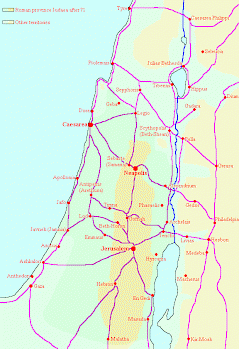
When king Herod the Great died in 4 BCE, the emperor Augustus divided his kingdom between his three sons. Herod Antipas was to rule Galilee and the east bank of the Jordan as a tetrarch until 39 CE; Philip was to be tetrarch of the Golan heights in the north-east, which he held until 34 CE; and Herod Archelaus became the ethnarch ("national leader") of Judaea, which included Samaria in the north and Idumea in the south. Not everybody accepted this settlemenet; several messianic claimants revolted, and the Roman government had to send the governor of Syria, Publius Quinctilius Varus, to restore order. He needed no less than three legions.
Archelaus ruled so badly that the Jews and Samaritans unitedly appealed to Rome to request that he should be deposed. In 6 CE, Judaea became an autonomous part of the Roman province Syria, ruled by a prefect. A tax revolt lead by Judas the Galilean, was repressed by the Syrian governor Publius Sulpicius Quirinius.
Prefecture
Judaea was a a third-class province, which meant that it was so unimportant in terms of revenue, that it was not necessary to have it governed by a man of the senatorial order. A man from the order of the knights was sufficient. It was also unimportant in terms of extent: when it was created, it measured only 150 km north to south and 70 km east to west. Nonetheless, there were two distinct groups of subjects: on the one hand there were the monotheistic Jews, Samaritans and Idumeans, on the other hand the Greeks and Romans, who believed in many gods.
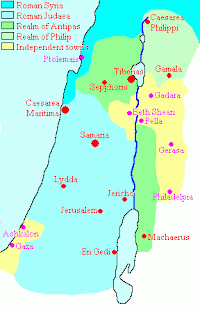
The capital of the new province Judaea was the splendid sea resort Caesarea. The prefect was not always staying in his palace; he was supposed to travel through the three main districts - Samaria, Judaea and Idumea - to administer justice and to control the local authorities in the assize towns. It comes as no surprise to meet the governor at Jerusalem when his Jewish subjects were celebrating Passover.
One of the main problems that the prefect had to cope with, was religion. The Romans were tolerant of different cultures and religions, and Judaism was a respected cult. As long as the Jews paid their taxes, the Romans did not really care about their beliefs. There were some differences of opinion, but none that could not be overcome. For example, the Romans demanded taxes in money, but Mosaic law forbade the use of coins with an image of the emperor or a pagan god; therefore, the Jews were allowed to use coins without the emperor's head when they were in Jerusalem. However, there were aspects of Judaism that at least some Romans considered barbarous: the best known example is the circumcision of children who were not of an age to consent with this mutilation.
The Jews, on the other hand, did not know what to think of the Romans. The elite, lead by the powerful high priest, tried to cooperate. They resigned themselves to the existence of large pagan cities in their country: Sepphoris in Galilee for example, and Caesarea, where a temple had been erected for the worship of the emperor. Other Jews were less easy-going. Ever since the death of the last king of the Jews, Herod the Great, people had pointed out that paying taxes to the emperor was a blasphemous act, because God was the one and only lord of Israel. Besides, it was widely believed that in the seventy-seventh generation after the creation, the Messiah would come to restore Israel. Nobody knew exactly what this meant -was the Messiah a warrior? a priest? a teacher?- but expectations were high.
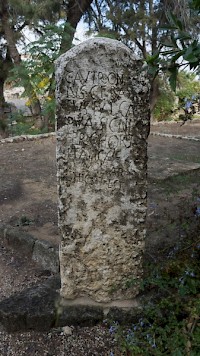
To cope with the inevitable misunderstandings and troubles, the prefect commanded some troops. There were two cohorts of auxiliaries in Jerusalem (at the old Herodian palace and at the fortress called Antonia): about thousand men. A third cohort guarded the capital Caesarea. Two cohorts of infantry and one squadron of cavalry served throughout the province.
The latter was the Ala I Sebastenorum which must be meant in Acts 23.23-32. It consisted of Samarians. We also know of the existence of a Cohors I Sebastenorum. These two regiments were probably created by king Herod the Great, who may have chosen Samarians, who often adhered to the Samaritan faith, to guard the Jewish population of Judaea.
Other known units are the Cohors Prima Italica Civium Romanorum, the Cohors Secunda Italica Civium Romanorum (Acts 10.1) and the Italian Cohors Prima Augusta (Acts 27.1). In short, of only one cohors we do not know the name.
Taken together, the prefect commanded a force to be reckoned with, but it was certainly not enough when things went seriously wrong. In that case, his superior, the governor of Syria, would have to send a legion, a unit of 5,300 heavy armed foot soldiers. The Roman historian Tacitus has included a brief catalogue of these interventions in his Histories (5.9-10), and this proves that the prefects did their job remarkably well: the legions came in action only once, in 41.
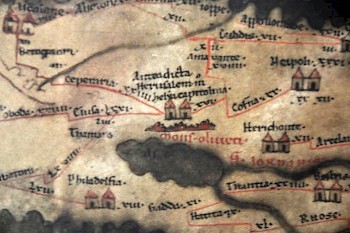
The governor had other responsibilities: he was the supreme judge, had to control the books of the municipalities and was responsible for the taxes.
Procuratorship
During the sixty years between the establishment of the province and the start of the war between the Romans and the Jews, there was one minor change in the administration. Between 41 and 44, Judaea was ruled by a king, Herod Agrippa. When he died, Judaea became a province again; the governor was no longer a prefect, but a procurator. The main difference is that a prefect was a soldier and a procurator was a civilian. Another difference is that the procurators were also responsible for Galilee and the territories on the east bank of the Jordan. A third difference was that the prefects had had a considerable influence on the appointment of the high priest; under the procurators, the high priest was appointed by a Jewish prince named Marcus Julius Agrippa.
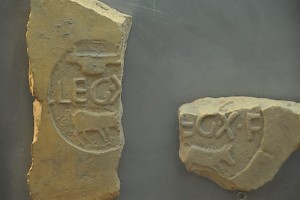
The rule of the procurators seems, on the whole, to have been unhappier than that of the prefects. The Jewish historian Flavius Josephus informs us of more disturbances of the civil order. (This cannot the result of the fact that Josephus could remember the more recent events better than the disturbances preceding his own time, because he mentions many disturbances before the establishment of the province.) It seems that Judaea was becoming restless; resistance to the Romans became more and more widespread. It is unclear why the procurators were unable to cope with this problem and why the prefects had done so well; maybe, it can be explained from the fact that they had larger responsibilities but possessed smaller powers. After 70, Judaea was occupied by the legion X Fretensis, which was commanded by the procurator.
Literature
- The most important ancient source for the rule of king Herod and seventy years following was written by Flavius Josephus: his Jewish Antiquities.
- Nikos Kokkinos, The Herodian Dynasty: Origins, Role in Society and Eclipse (1998 Sheffield)
- M.P. Speidel, "The Roman Army in Judaea under the Procurators", in M.P. Speidel, Roman Army Studies II (1992 Stuttgart), pages 224-232